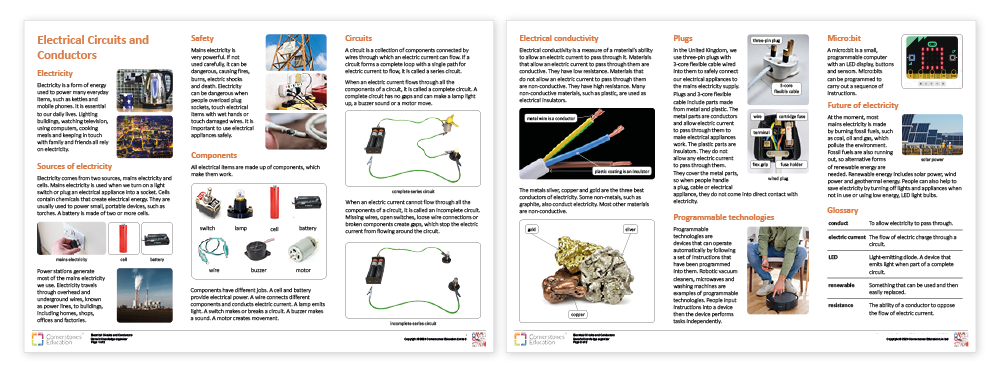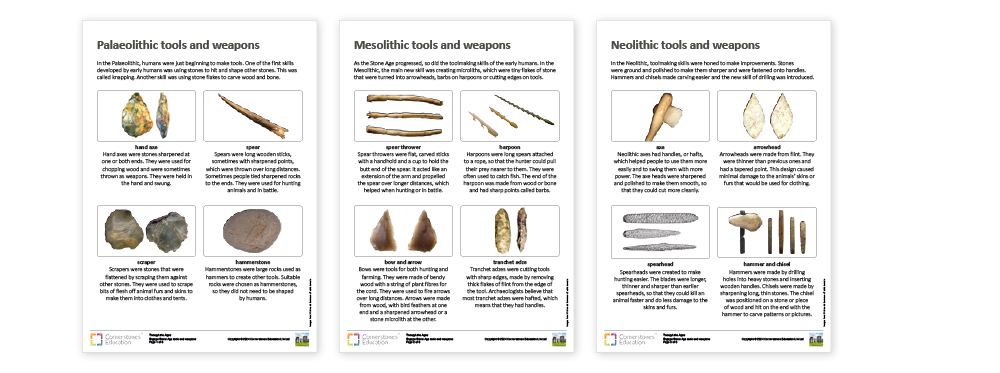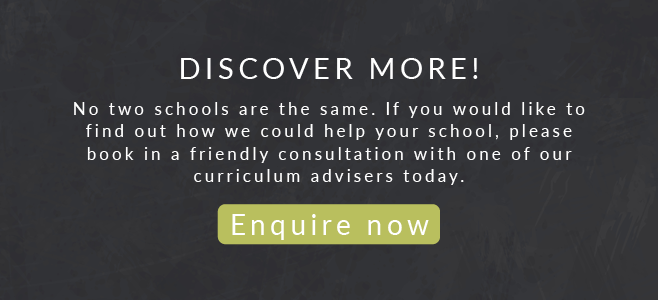Often referred to as the ‘final foot soldiers’ of a school’s curriculum, resources can make or break a lesson and significantly impact your curriculum’s success.
Many of us have seen and used a variety of teaching resources in our careers. The quality of these, no doubt, will have varied from ‘can’t live without’ to ‘waste of time’ and everything in between. At Cornerstones, we are constantly in dialogue with teachers about what they need to make their lessons easier to deliver and improve the success of their curriculum. We have also learned what makes a good resource and how high-quality, tailored resources can save teachers’ time. To help you think more broadly about ways to equip your curriculum with high-quality resources, here is a quick guide that includes some handy, time-saving tips.
Published resources
Published resources include textbooks, information books and online resources. For teachers, the most accessible resources can be found online, some free at the point of use. However, while this sounds promising, it is evident that not all resources are created equally. Ensuring any resource found online is factually correct and meets the specific aims of your lesson is a priority for any teacher. However, this often requires time and clever IT skills to adapt or tailor it.
Correct use of vocabulary
When choosing a written resource, you must check that the vocabulary meets the year group expectations and reading levels. Of course, some resources may purposely include ambitious or specific subject vocabulary to stretch and challenge children. In such cases, the best resources will also include glossaries so that children can learn the meaning of those words. This knowledge organiser from Cornerstones is an excellent example demonstrating ambitious subject-specific vocabulary and glossary.

Meeting the needs of your lesson
There are many online resources that, on first impression, meet the needs of your lesson. However, as these resources are often created with a broader audience in mind, it is usually the case that on closer inspection, rather than helping you teach the main objectives of your lesson, they distract from it. The best options are to find a scheme with bespoke resources written specifically for each lesson, create the resource yourself, or use easily editable resources.
Fact-checked
Some see the rise of artificial intelligence as the silver bullet to reducing teacher workload. Its ability to ‘plan’ a lesson or create a resource is potentially a great time saver. However, such resources should only be used with quality assurance. We have seen AI-created resources that contain misinformation and inaccuracies, and some that could be of much better quality. Many teachers prefer to opt for resources made by ‘actual intelligence’ and real people with the expertise to write them precisely for their needs.

Beautiful and accurate imagery
Wanting to have beautiful resources to support your teaching is not superficial frippery. Ensuring a resource is well-presented, contains accurate imagery, and is of top quality is what you and your children deserve. It plays a big part in engaging learners with the resource. If we expect children to create beautiful, accurate work with pride, then the resources we provide them should be an excellent example of that. Look for resources that show actual historical artefacts instead of ‘cartoon’ style illustrations, which are often inaccurate representations of the past and do nothing to develop children’s knowledge.

Evidence-informed
At a time when cognitive research is very much available to the profession, the best teaching resources are created and designed to take account of that. One of the most prominent influences on the creation of resources is the knowledge we have about Cognitive Load Theoryy (Sweller). This means that the resources we choose should not be over-complicated or distract the learner from the primary purpose of the lesson.
Consistency across school
The impact of a school that takes a cohesive and consistent approach to resourcing its curriculum is significant. Not only does it ensure there is, for example, a progression of vocabulary, but things like critical concepts and pedagogy are also developed over time across the whole school. Children and teachers are also familiar with the different types of resources and how they should be used, and teachers can be confident that new learning will build on prior knowledge. This can only happen with a curriculum scheme like Cornerstones – with integrated resources written exclusively for a specific lesson.

Other resources you’ll need to teach your curriculum successfully
Video resources
Video resources are commonplace in schools today. The internet is full of vibrant, entertaining videos and trusted sources such as BBC Bitesize that offer high-quality examples that are free to use and cover major curriculum topics. At Cornerstones, we make videos and animations that match perfectly to the lesson intention, so no time is wasted searching for appropriate examples.
Objects
Objects are vital teaching resources. A fifty pence piece can be used to embed key knowledge about the role of the King and the value of money in society. The reproduction of plants can be explored using a flower head and tweezers. The concept of geological periods, specifically the Cambrian Period, can be discovered through close inspection of a fossilised ammonite. Children can make amazing discoveries and deeper connections when using a wide range of stimulating objects. Identify where objects can be used in your curriculum and be prepared. You don’t always have to use paper-based materials.
Passionate people
People are also a valuable resource. A quick letter to parents asking about their interests, skills and availability could yield beneficial results and enhance your curriculum coverage. A talented, amateur printmaker sharing their passion for linocut could inspire a young artist; a doctor or dentist could share important knowledge and information about teeth, or the digestive system; a well-travelled parent could share important geographical knowledge about places visited. Just a few well-chosen volunteers could turn out to be some of the best resources you use all year.
Local environments
Your local environment can also be a great resource. Your high street, a small park or an industrial estate can all provide children with inspiration, information and knowledge. The high street is a fantastic historical resource for showcasing change over time, so take a walk with an old photo, spotting which shops have changed, and find clues about the history of significant buildings. A small park will be home to a huge number of minibeasts, trees, plants and habitats, all waiting to be discovered. An industrial estate could enhance learning about modern building design, aspects of human geography or provide land use data for geography and maths lessons.
Museums, associations and charities
Museums, associations and charities are all valuable sources of information, and their websites can provide you with resourcing gold! If you want to know about birds, visit the RSPB website. British history? The British Museum. Canals? The Canal and River Trust. Castles? English Heritage. Many of these websites provide free resources to support teaching and learning. Each one is written by an expert in their field and they seek to share their knowledge and enthusiasm with as many people as possible. This valuable information can also help children make connections between what they learn and real-life contexts.



